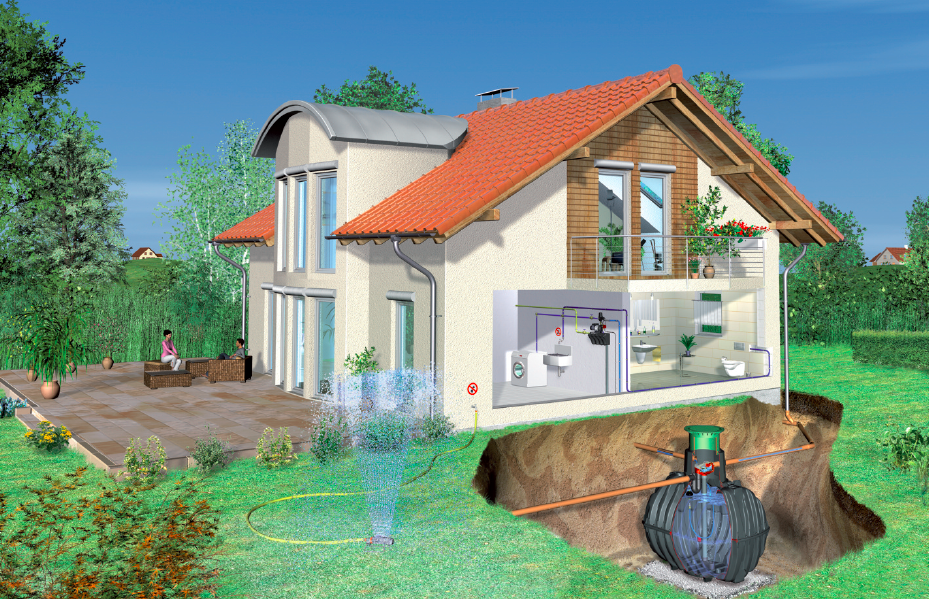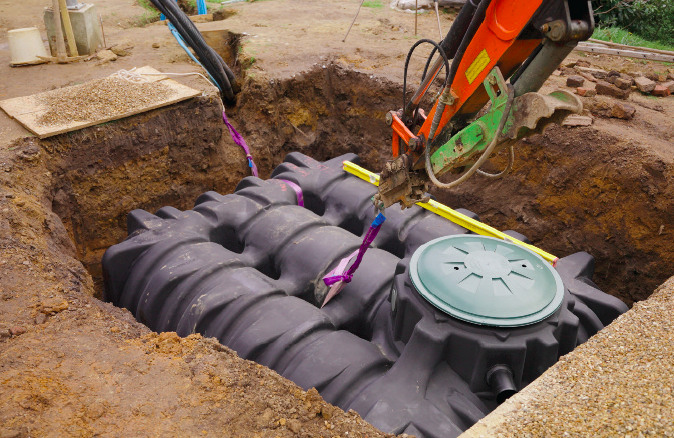
David Stagg, technical product specialist for water management specialists GRAF UK, argues the case for making rainwater harvesting as mandatory as solar panels.
Few utility authorities suffer quite the bad press that water ones do, and in some cases, it might be justified. But when it comes to realising the importance of re-using the most vital of natural resources, it is not necessarily just them the finger should be pointed at. Reports that the Future Homes Standard is going to mandate rooftop solar on all new-build homes from 2027 may have been welcomed by the solar industry, but housebuilders and developers are believed to have lobbied against it, preferring to make solar panels optional to factor in unsuitable roof pitches, orientation or overshading. This might help explain why only two fifths of new homes currently have solar systems fitted.
And it seems they – or the volume housebuilders at least – might be equally hesitant in these days of increasing costs and decreasing margins to embrace water reuse via rainwater harvesting, where the most common collection surface is the rooftop, unless there are Government grants or funding in place. Yet these, unlike water, are in plentiful supply.
In the south-east of England, there is less water per person than the desert states of Syria and Sudan. The region has just had its driest spring/summer since 1976, yet almost every rainfall record was broken in November 2024. What a difference to drinking water levels might have been made had naturebased solutions like rainwater harvesting been employed, which can save hundreds of thousands of litres over a year, reduce the risk of flooding and storm overflows by slowing surface water run-off reaching sewers, and reduce the need for new water infrastructure.
 This was recognised in guidance from CIRIA’s (Construction Industry Research and Information Association) ‘Delivering better water management through the planning system’*1 which supports planning for water through the delivery of integrated water management. The guidance highlights that “an efficient approach is needed to manage how water is used, harvested and recycled within buildings and ….. innovative approaches involving rainwater harvesting and grey water recycling can significantly reduce volumes of both treated water to a site and wastewater entering the sewerage system.”
This was recognised in guidance from CIRIA’s (Construction Industry Research and Information Association) ‘Delivering better water management through the planning system’*1 which supports planning for water through the delivery of integrated water management. The guidance highlights that “an efficient approach is needed to manage how water is used, harvested and recycled within buildings and ….. innovative approaches involving rainwater harvesting and grey water recycling can significantly reduce volumes of both treated water to a site and wastewater entering the sewerage system.”
Local authorities in this region received more than 52,000 planning applications*2 for development, more than any other region, but English regions now at serious risk of water scarcity are now twice the number they were in 2007.
It is the housebuilders having to meet Water Neutrality requirements in some of these regions who are designing rainwater harvesting into their projects from scratch, which is more cost-effective than doing it retrospectively, but like solar panels, should realise a return on investment in terms of water cost savings within a few years. The storage tank is usually the costliest part of a rainwater harvesting system.
While they are sized based to hold around 18 days average rainfall, tank sizes range from small 1,500-litre capacity domestic tanks, through to large-scale tanks which can hold around 52,000 litres. Further storage capacity can be provided through linking tanks together or through engineered ponds, particularly as part of an integrated water management approach.
Water neutrality is now forefront with some water companies, as seen at some of their “Developer Days”, and rainwater harvesting is a major component of this. Using recycled rainwater for garden irrigation, jet washing, toilet flushing (24% of daily personal use) and washing machines (18%) can save huge volumes of drinking water – at least 50% and even up to 80%.
Thames Water’s environmental incentives for developers include £1,000 grants per property towards rainwater harvesting and greywater re-use that saves at least 50 litres per property per day of the 275 litres of water that the average new home uses. Southern Water offers developers the largest incentives on the market, up to £1,750 per plot, to reduce, re-use and neutralise water, and if motivation like that works, will save up to 100 litres per person at a cost to the developer of £10 per property*3. Some 65% of people say that being near water is their favourite part of nature and improves their mental wellbeing*4, yet water is more valuable than gold in places like Africa. Far from being a feel-good factor, water will become a bargaining tool at least, a reason for war at worse, in the next decade or so.
And for those who think you can’t have both – solar panels and rainwater harvesting – you can. Solar panels do not affect the sizing of a rainwater harvesting system based on roof area, or on rainwater yield from the roof. Now that would be a mandate!
For more information visit www.rdr.link/dbg031








